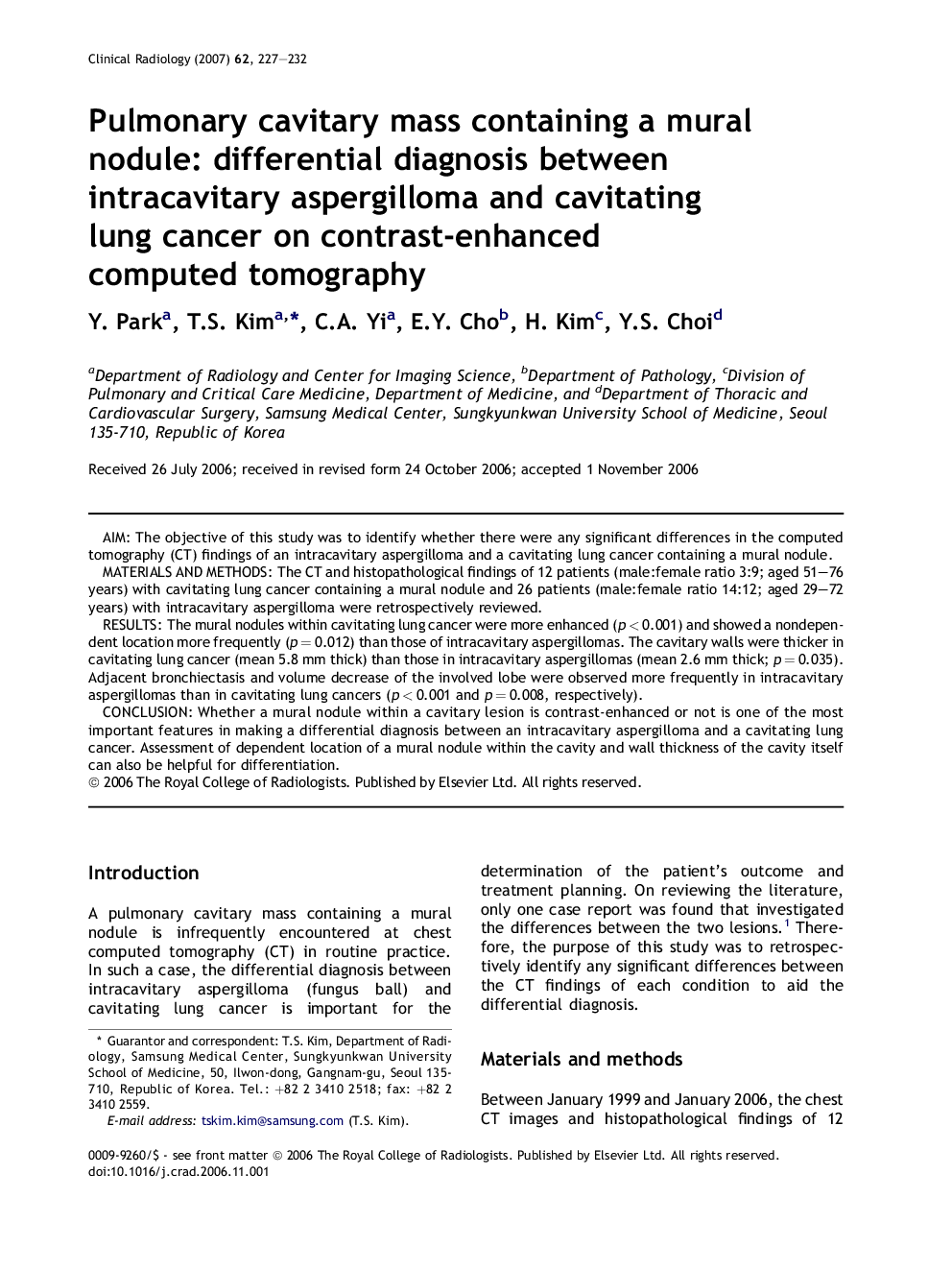| Article ID | Journal | Published Year | Pages | File Type |
|---|---|---|---|---|
| 3983527 | Clinical Radiology | 2007 | 6 Pages |
AimThe objective of this study was to identify whether there were any significant differences in the computed tomography (CT) findings of an intracavitary aspergilloma and a cavitating lung cancer containing a mural nodule.Materials and methodsThe CT and histopathological findings of 12 patients (male:female ratio 3:9; aged 51–76 years) with cavitating lung cancer containing a mural nodule and 26 patients (male:female ratio 14:12; aged 29–72 years) with intracavitary aspergilloma were retrospectively reviewed.ResultsThe mural nodules within cavitating lung cancer were more enhanced (p < 0.001) and showed a nondependent location more frequently (p = 0.012) than those of intracavitary aspergillomas. The cavitary walls were thicker in cavitating lung cancer (mean 5.8 mm thick) than those in intracavitary aspergillomas (mean 2.6 mm thick; p = 0.035). Adjacent bronchiectasis and volume decrease of the involved lobe were observed more frequently in intracavitary aspergillomas than in cavitating lung cancers (p < 0.001 and p = 0.008, respectively).ConclusionWhether a mural nodule within a cavitary lesion is contrast-enhanced or not is one of the most important features in making a differential diagnosis between an intracavitary aspergilloma and a cavitating lung cancer. Assessment of dependent location of a mural nodule within the cavity and wall thickness of the cavity itself can also be helpful for differentiation.
